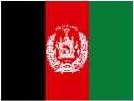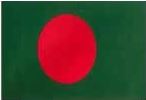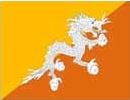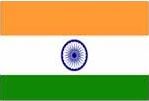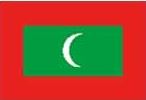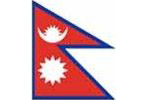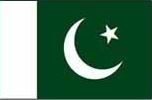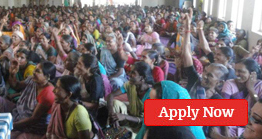You are here

Sri Lanka Emblem

Sri Lanka Flag
Introduction - Sri Lanka
The first Sinhalese arrived in Sri Lanka late in the 6th century B.C., probably from northern India. Buddhism was introduced in about the mid-third century B.C., and a great civilization developed at the cities of Anuradhapura (...More
-

Introduction
Sri Lanka -

Geography
Sri Lanka -

People
Sri Lanka -

Government
Sri Lanka -

Economy
Sri Lanka -

Communication
Sri Lanka -

Transportation
Sri Lanka
Introduction - Sri Lanka 
The first Sinhalese arrived in Sri Lanka late in the 6th century B.C., probably from northern India. Buddhism was introduced in about the mid-third century B.C., and a great civilization developed at the cities of Anuradhapura (kingdom from circa 200 B.C. to circa A.D. 1000) and Polonnaruwa (from about 1070 to 1200). In the 14th century, a south Indian dynasty established a Tamil kingdom in northern Sri Lanka. The coastal areas of the island were controlled by the Portuguese in the 16th century and by the Dutch in the 17th century. The island was ceded to the British in 1796, became a crown colony in 1802, and was formally united under British rule by 1815. As Ceylon, it became independent in 1948; its name was changed to Sri Lanka in 1972. Tensions between the Sinhalese majority and Tamil separatists erupted into war in 1983. After two decades of fighting, the government and Liberation Tigers of Tamil Eelam (LTTE) formalized a cease-fire in February 2002 with Norway brokering peace negotiations. Violence between the LTTE and government forces intensified in 2006, but the government regained control of the Eastern Province in 2007. By May 2009, the government announced that its military had defeated the remnants of the LTTE. Since the end of the conflict, the government has resettled tens of thousands of internally displaced persons and has undertaken a number of massive infrastructure projects to reconstruct its economy.
Geography - Sri Lanka 
Location:
Southern Asia, island in the Indian Ocean, south of India
Geographic coordinates:
7 00 N, 81 00 E
Map references:
Asia
Area:
total: 65,610 sq km
country comparison to the world: 122
land: 64,630 sq km
water: 980 sq km
Area - comparative:
slightly larger than West Virginia
Land boundaries:
0 km
Coastline:
1,340 km
Maritime claims:
territorial sea: 12 nm
contiguous zone: 24 nm
exclusive economic zone: 200 nm
continental shelf: 200 nm or to the edge of the continental margin
Climate:
tropical monsoon; northeast monsoon (December to March); southwest monsoon (June to October)
Terrain:
mostly low, flat to rolling plain; mountains in south-central interior
Elevation extremes:
lowest point: Indian Ocean 0 m
highest point: Pidurutalagala 2,524 m
Natural resources:
limestone, graphite, mineral sands, gems, phosphates, clay, hydropower
Land use:
arable land: 13.96%
permanent crops: 15.24%
other: 70.8% (2005)
Irrigated land:
5,700 sq km (2008)
People - Sri Lanka 
Population:
21,283,913 (July 2011 est.)
country comparison to the world: 57
Age structure:
0-14 years: 24.9% (male 2,705,953/female 2,599,717)
15-64 years: 67.2% (male 6,993,668/female 7,313,440)
65 years and over: 7.9% (male 720,219/female 950,916) (2011 est.)
Median age:
total: 30.8 years
male: 29.7 years
female: 31.8 years (2011 est.)
Population growth rate:
0.934% (2011 est.)
country comparison to the world: 122
Birth rate:
17.42 births/1,000 population (2011 est.)
country comparison to the world: 116
Death rate:
5.92 deaths/1,000 population (July 2011 est.)
country comparison to the world: 167
Net migration rate:
-2.16 migrant(s)/1,000 population (2011 est.)
country comparison to the world: 166
Government - Sri Lanka 
Country name:
conventional long form: Democratic Socialist Republic of Sri Lanka
conventional short form: Sri Lanka
local long form: Shri Lamka Prajatantrika Samajaya di Janarajaya/Ilankai Jananayaka Choshalichak Kutiyarachu
local short form: Shri Lamka/Ilankai
former: Serendib, Ceylon
Government type:
republic
Capital:
name: Colombo
geographic coordinates: 6 56 N, 79 51 E
time difference: UTC+5.5 (10.5 hours ahead of Washington, DC during Standard Time)
note: Sri Jayewardenepura Kotte (legislative capital)
Administrative divisions:
9 provinces; Central, Eastern, North Central, Northern, North Western, Sabaragamuwa, Southern, Uva, Western
Independence:
4 February 1948 (from the UK)
National holiday:
Independence Day, 4 February (1948)
Constitution:
adopted 16 August 1978, certified 31 August 1978; amended 20 December 2001
Economy - Sri Lanka 
Sri Lanka is engaging in large-scale reconstruction and development projects following the end of the 26-year conflict with the LTTE, including increasing electricity access and rebuilding its road and rail network. Additionally, Sri Lanka seeks to reduce poverty by using a combination of state directed policies and private investment promotion to spur growth in disadvantaged areas, develop small and medium enterprises, and promote increased agriculture. High levels of government funding may be difficult, as the government already is faced with high debt interest payments, a bloated civil service, and historically high budget deficits. The 2008-09 global financial crisis and recession exposed Sri Lanka's economic vulnerabilities and nearly caused a balance of payments crisis, which was alleviated by a $2.6 billion IMF standby agreement in July 2009. The end of the civil war and the IMF loan, however, have largely restored investors' confidence, reflected in part by the Sri Lankan stock market's recognition as one of the best performing markets in the world. Sri Lankan growth rates averaged nearly 5% in during the war, but increased government spending on development and fighting the LTTE in the final years spurred GDP growth to around 6-7% per year in 2006-08. After experiencing 3.5% growth in 2009, Sri Lanka's economy is poised to achieve high growth rates in the postwar period.
GDP (purchasing power parity):
$106.5 billion (2010 est.)
country comparison to the world: 69
$97.6 billion (2009 est.)
$94.02 billion (2008 est.)
note: data are in 2010 US dollars
GDP (official exchange rate):
$49.68 billion (2010 est.)
GDP - real growth rate:
9.1% (2010 est.)
country comparison to the world: 8
3.8% (2009 est.)
6% (2008 est.)
GDP - per capita (PPP):
$5,000 (2010 est.)
country comparison to the world: 148
$4,600 (2009 est.)
$4,400 (2008 est.)
note: data are in 2010 US dollars
GDP - composition by sector:
agriculture: 12.6%
industry: 29.8%
services: 57.6% (2010 est.)
Communication - Sri Lanka 
Telephones - main lines in use:
3.523 million (2010)
country comparison to the world: 45
Telephones - mobile cellular:
15.868 million (2010)
country comparison to the world: 46
Telephone system:
general assessment: telephone services have improved significantly and are available in most parts of the country
domestic: national trunk network consists mostly of digital microwave radio relay; fiber-optic links now in use in Colombo area and fixed wireless local loops have been installed; competition is strong in mobile cellular systems and mobile cellular subscribership is increasing
international: country code - 94; the SEA-ME-WE-3 and SEA-ME-WE-4 submarine cables provide connectivity to Asia, Australia, Middle East, Europe, US; satellite earth stations - 2 Intelsat (Indian Ocean)
Broadcast media:
government operates 2 television channels and a radio network; multi-channel satellite and cable TV subscription services are obtainable; 8 private TV stations and about a dozen private radio stations in operation (2008)
Internet country code:
.lk
Internet hosts:
8,865 (2010)
country comparison to the world: 131
Internet users:
1.777 million (2009)
country comparison to the world: 77
Transportation - Sri Lanka 
Airports:
18 (2010)
country comparison to the world: 140
Airports - with paved runways:
total: 14
over 3,047 m: 1
1,524 to 2,437 m: 6
914 to 1,523 m: 7 (2010)
Airports - with unpaved runways:
total: 4
914 to 1,523 m: 1
under 914 m: 3 (2010)
Railways:
total: 1,449 km
country comparison to the world: 80
broad gauge: 1,449 km 1.676-m gauge (2010)
Roadways:
total: 91,907 km (2008)
country comparison to the world: 53
Waterways:
160 km (primarily on rivers in southwest) (2008)
country comparison to the world: 101
Merchant marine:
total: 22
country comparison to the world: 98
by type: bulk carrier 4, cargo 14, chemical tanker 1, petroleum tanker 3
foreign-owned: 5 (Germany 5) (2010)
Ports and terminals:
Colombo

